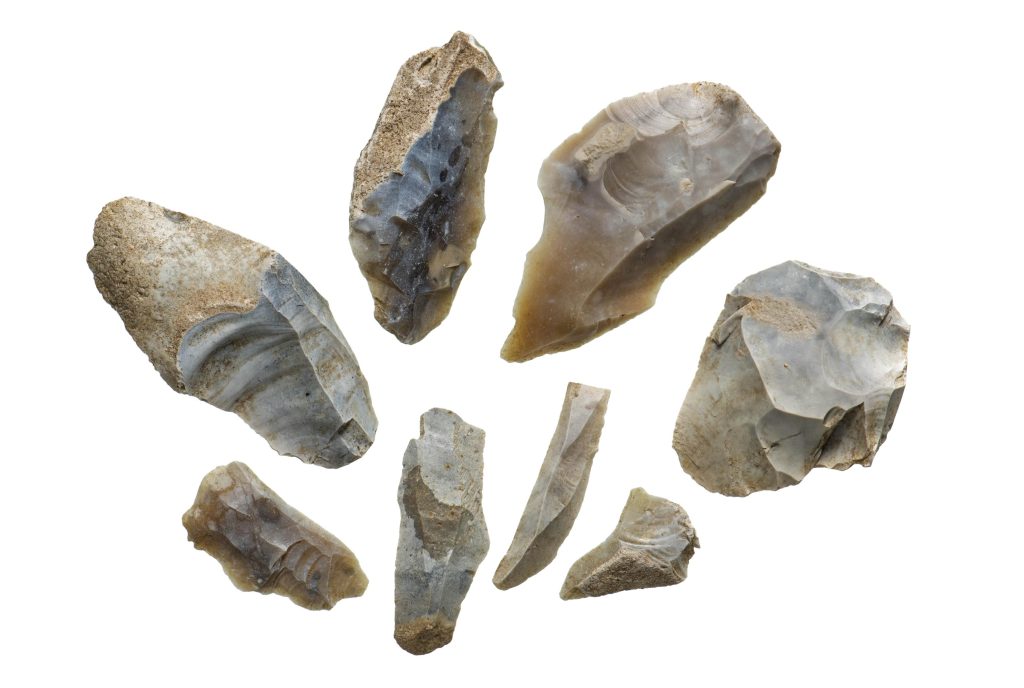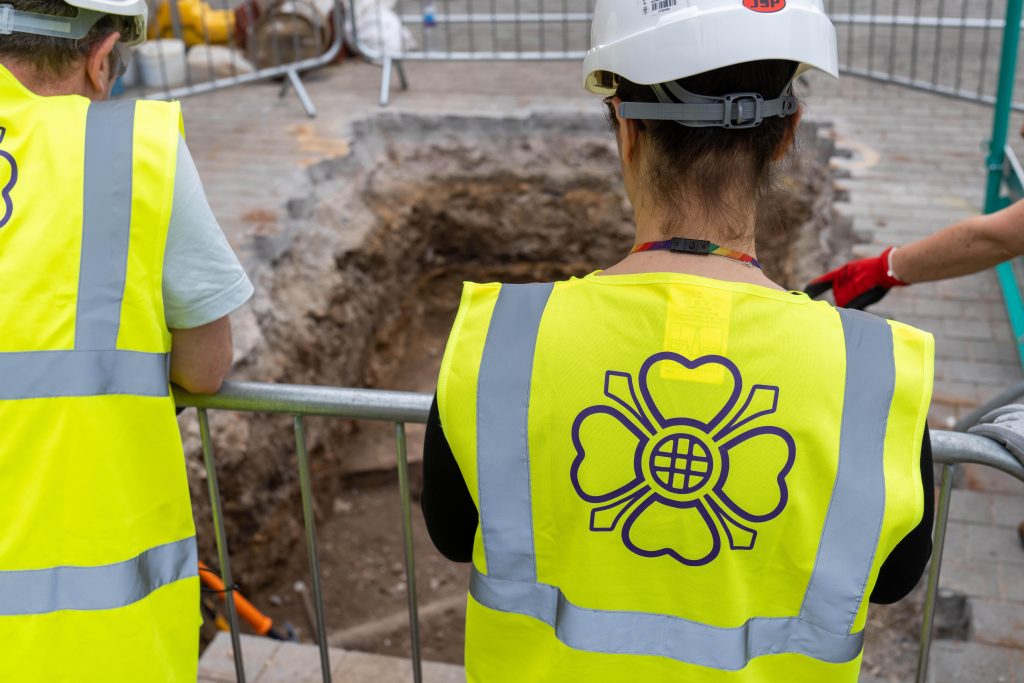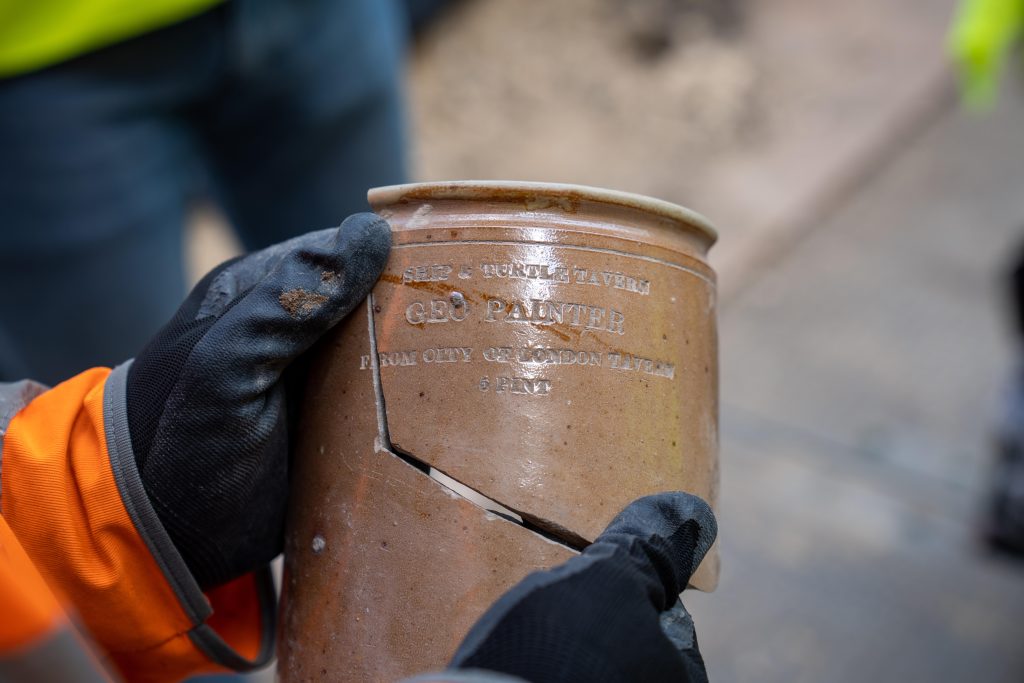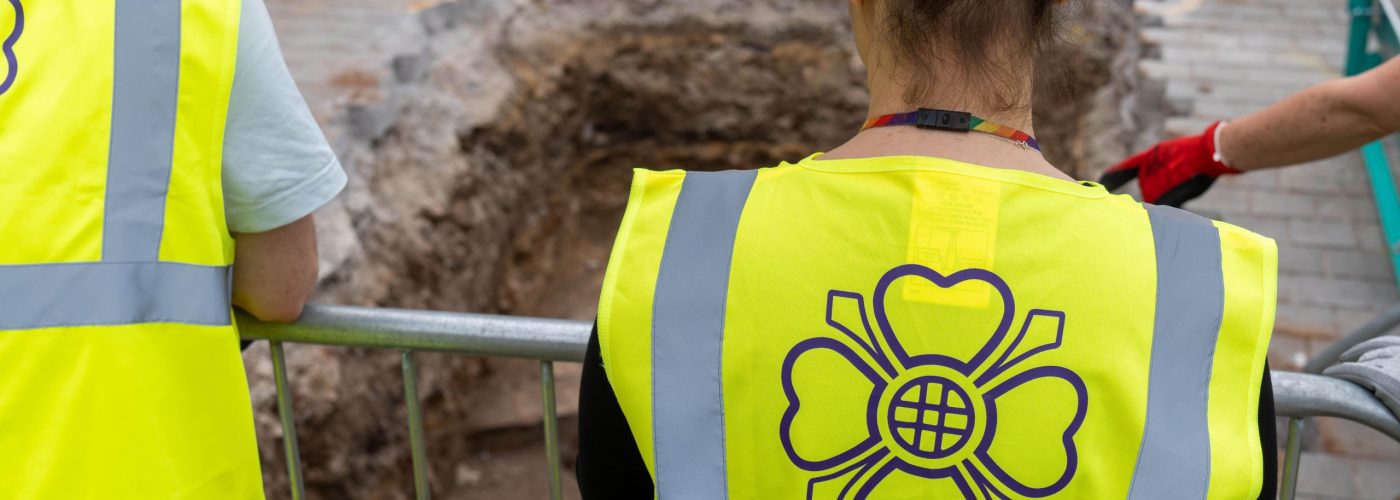
Archaeologists working at the Palace of Westminster have uncovered evidence of human activity dating back nearly 6,000 years – over a millennium older than the earliest earthworks at Stonehenge. The discovery includes more than 60 struck flint flakes, including one worked tool, likely dating to the late Mesolithic or early Neolithic period (around 4300 BC).
The discovery is part of a phased three-year programme of archaeological investigations led by the Houses of Parliament Restoration and Renewal Delivery Authority. The findings will help shape future design and construction decisions as part of the Palace’s restoration.
The flints were found in undisturbed sand deposits that once formed part of Thorney Island, an area where prehistoric communities are thought to have fished, hunted, and gathered food. These rare finds offer a glimpse into early human life in what is now central London.
The Lord Speaker, Lord McFall of Alcluith, said:
“The history of Westminster is long, fascinating and well-documented. Discoveries such as these allow us to add to our knowledge of this ancient site. These archaeological investigations are an important part of the preparation work for the restoration and renewal of the Victorian building.”
Judith Cummins MP, Deputy Speaker of the Commons and R&R Programme Board Chair:
“As we prepare for the restoration and renewal of the iconic Palace of Westminster, a huge amount of work is going on to understand more about the building and the thousands of years of history underneath the home of Parliament as we know it today.”
In addition to the flints, the investigation has uncovered a rich and varied collection of artefacts that shed light on the people who lived, worked, and passed through this iconic location over the centuries. Highlights include:
- A medieval leather boot, shoe soles, and straps in a range of sizes, estimated to be around 800 years old.
- Fragments of intricately decorated clay tobacco pipes, dating from the reconstruction of the Palace of Westminster after the 1834 fire, likely used by stonemasons working on the site.
- A Roman altar fragment, believed to be over 2000 years old, which was re-purposed and likely incorporated into the fabric of a later structure.
- An ornate lead badge in the shape of a flowering heart, a popular 14-15th century romantic symbol, appearing on wedding rings and seals.
- A 19th-century five-pint beer jug inscribed “Geo Painter”, linked to George Painter, tavern keeper of the historic Ship and Turtle Tavern in London’s Leadenhall area.
- A decorated medieval Westminster floor tile, which served as a model for tiles used in the 19th-century rebuilding of the Palace of Westminster.
Chair of the Houses of Parliament Restoration and Renewal Delivery Authority Board, distinguished historian, archaeologist and heritage restoration expert, Dr Simon Thurley CBE, said:
“The Palace of Westminster has been a central part of our national story for a thousand years; the location of momentous events that have shaped the UK’s history. As we plan for the significant restoration and renewal of Parliament, we must tread softly on the history beneath our feet, to protect it, and to learn from it. Last year that process of discovery began with the first trial excavations which have already revealed things we didn’t know, as well as confirming things we suspected. It is the start of a fascinating and important journey of discovery.”
A Major Medieval Discovery – the Lesser Hall
In a major archaeological breakthrough in August 2025, substantial remains of the medieval Lesser Hall, also known as the White Hall, were uncovered.
Dating back to 1167, the two-storey hall originally served as a royal dining space and later played host to key moments in Parliamentary history. Over the centuries, it housed the Court of Chancery, the Court of Requests, and even the House of Commons and House of Lords at different times.
Long thought to have been destroyed in the Great Fire of 1834 – which is believed to have started in the furnace room of the hall’s basement – new archaeological evidence, supported by historical records, reveals that sections of the hall’s medieval stone walls not only survived the blaze, but were restored, re-roofed, and continued in use until the building’s final demolition in 1851. Remarkably, parts of these walls also withstood a nearby WWII bomb strike decades later.
This is the most significant discovery of the current archaeological investigations and provides vital insights into the layout and survival of historic structures beneath the modern Palace. The findings will help shape future design and conservation decisions as part of the Restoration and Renewal Programme.
Head of the Government Historic Estates Unit at Historic England, David Brock said:
“The initial finds from archaeological investigations confirm the richness of Westminster as a site. They testify to the variety of human experience on this site. The locating of the Lesser Hall walls is particularly exciting. As this work continues, we hope it will further expand our understanding of the surviving Medieval buildings, especially Westminster Hall, and that the discoveries will enrich our knowledge of this World Heritage Site. It must also pave the way for a sensitive response to the site’s past when proposals are made for the restoration and renewal of the Palace.”


Archaeological investigations are currently being carried out by MOLA (Museum of London Archaeology), commissioned by the Restoration and Renewal Delivery Authority. These investigations span nine key locations across the Palace of Westminster estate, including Black Rod’s Garden, Royal Court, Speaker’s Court, Speaker’s Green, Cromwell Green, Old Palace Yard, Victoria Tower Gardens, New Palace Yard, and the Thames Foreshore and River.
These areas have been carefully selected in line with current design proposals, targeting locations where future ground disturbance is expected. The Palace sits within a Tier 1 Archaeological Priority Area, an official designation that reflects the site’s exceptional archaeological significance and sensitivity. Its grounds have been a centre of royal and political life for over a millennium. In the 11th century, King Canute established a royal residence on what was then known as Thorney Island. Later, between 1045 and 1050, Edward the Confessor built a royal palace on the site while commissioning the first Westminster Abbey, laying the foundations for the Palace of Westminster’s enduring role in British history.
So far, the team has uncovered, recorded, and reburied evidence of structures and features from the medieval Palace, later Parliamentary buildings, and the Victorian-era reconstruction. These early-stage works are helping to build a clearer picture of the site’s rich and layered history.
Specifically, these ongoing investigations will:
- Enhance understanding of the Palace’s archaeology and fill gaps in the historical record;
- Inform future surveys, design proposals and construction strategies, ensuring works are sensitive to the site’s archaeological significance;
- Support a faster, more informed consenting process, reducing risk and avoiding costly delays during major works; and
- Enable early mitigation measures with key stakeholders before construction begins.
By the end of this phase, specialists will have dug 14 trial pits, drilled 10 geoarchaeological boreholes and surveyed the river foreshore. Archaeological investigations will continue through to 2026, with a full report of the findings to be published 2027.




Archaeology lead at the Restoration and Renewal Delivery Authority Diane Abrams said:
“These exciting discoveries and finds are all contributing to the national story and historical knowledge of the Palace of Westminster site and the World Heritage Site. To see rare evidence for prehistoric flint tool making on undisturbed sand deposits in this part of Thorney Island, where Parliament now stands, is fantastic. Uncovering the surviving remains of the medieval Lesser Hall wall along with foundations of former Parliamentary structures is also very special.
“It is vital we continue these investigations to understand what lies beneath the ground here at an early stage to inform and guide decisions on design and further surveys ahead of future enabling and construction works. This ensures the site’s extraordinary heritage and archaeology is managed appropriately while enabling the safe and efficient delivery of the Restoration and Renewal Programme”
Building, Design & Construction Magazine | The Choice of Industry Professionals





